As Election Day Nears, a Look at the Presidential History of Swimming
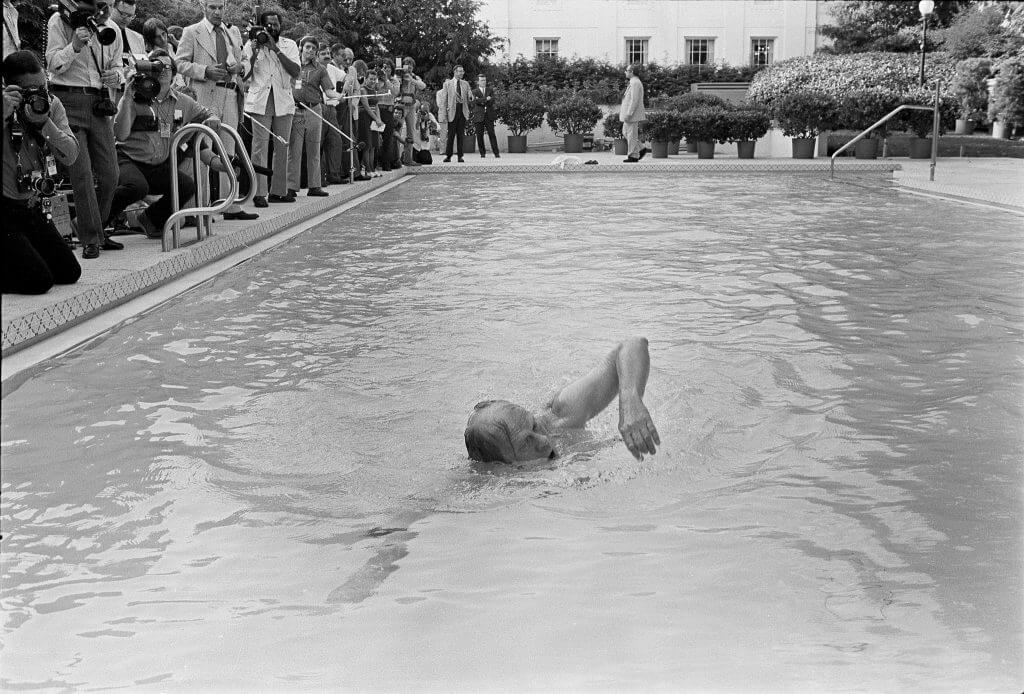
The Presidential History of Swimming
Franklin D. Roosevelt Jr. once said, “I think swimming is a wonderful thing.” Roosevelt’s father, Franklin D. Roosevelt (the 32nd President of the United States), swam a great deal during his lifetime. But FDR was not the only one of our Commanders-in-Chief who enjoyed swimming; in fact, a number of presidents swam fairly frequently, whether competitively or for leisure. While the political history of the presidents is discussed again and again, the history of their swimming is not so well known.
The White House Pool
The White House has had two different pools since the 1930s. The first was an indoor pool installed in June of 1933 for FDR to use. Prior to becoming president, FDR suffered from polio, which permanently paralyzed his legs. He used swimming as a form of therapy. Thus, when he became president, the New York Daily News put on a campaign to raise money to build a pool for him at the White House. It officially opened on June 2, 1933 and was located in between the White House and the West Wing.
Frequent users of FDR’s pool included Harry Truman, who, to the entertainment of his staff, used to swim with his spectacles on. John F. Kennedy often swam to soothe his ailing back and often invited others to join him–including some women who were not Mrs. Kennedy. Lyndon Baines Johnson would swim in the pool naked. He once invited famous evangelical minister Billy Graham to do so too.
By Richard Nixon’s time, a new press room was needed to accommodate the growing press. Preferring bowling to swimming, Nixon chose to build the new press room over the pool. In doing so, however, he left the pool so it could be easily restored. Today, the signatures of special White House guests can be found lining the tiles of the old pool below the press room.
By contrast, Nixon’s successor, Gerald Ford, was known to be an avid swimmer who swam almost daily. Ford initially planned on moving the press to a new location to reopen FDR’s pool, but the cost of doing so scared him. Instead, Ford installed the outdoor pool which First Families continue to use frequently. Today, a cabana and a hot tub exist there as well.
Presidential Skinny Dipping
While many of our nation’s leaders enjoyed swimming, a few of them enjoyed swimming sans swimsuit. John Quincy Adams, the first president known for frequent swimming, is probably the most well-known for his nude swims in the Potomac. Everyday, Adams would wake up at 5 am (4:30 in the summer), make a fire, read his Bible, and then go for a swim. At his time, Adams was known to be a powerful swimmer who was at ease in the water. About swimming Adams once wrote, “I have found it invariably conducive to health, and never experienced from it the slightest inconvenience.”
Adams’s daily morning swims were no secret to Washington society. So, allegedly, Anne Royall, one of the first female journalists, wanted to interview the president. In order to do so, she went down to the Potomac while he was swimming and sat on his clothes. She refused to leave until he answered all of her questions. In doing so, Royall became the first woman to interview a president.
Adams’ successor, Andrew Jackson, enjoyed nude swims as well, after which he liked to unwind with digging and weeding at the White House (properly clothed, of course). Teddy Roosevelt and Kennedy were among other skinny dipping presidents. These two were notable in that they had no qualms about inviting others to join them, including staff and ambassadors.
The Tennis Cabinet
If you remember from your high school U.S. history class, Teddy Roosevelt earned fame leading the Rough Riders during the Spanish-American War. The future president was always up for a challenge, and he carried that ambition and daringness through his presidency.
While serving as president, he formed what was known as his Tennis Cabinet, which initially started off as a tennis club. Tennis turned out to be a bit too tame for Teddy, so he turned to something else. He and his Tennis Cabinet instead would pick a point on a map to walk to without regard for obstacles–including bodies of water. These adventures often involved decent amounts of swimming, including swimming across Rock Creek with ice floating on it.
The later Roosevelt, FDR, while not as daring and able, held similar events during his presidency. Known as stag parties, the purpose of these events was to win over the good will of Congressional Democrats. These parties would include fishing, clay pigeon shooting, and of course, swimming naked.
Competitive Swimmers…
Two of the presidents swam competitively during their lifetimes. Both Kennedy and Ronald Reagan competed for their respective colleges during their young adulthood.
Although more well known as an actor, Reagan was actually captain of the Eureka College swim team. While serving as captain his junior year, his coach had a stroke. The president of the college then asked Reagan to coach the team while also remaining a member. That year at the conference championship, Eureka’s backstroker failed to show up for the 150 yard medley relay (butterfly and breaststroke were not separate strokes). Reagan then decided to swim both the backstroke and freestyle legs, infuriating the other coaches. At the time, however, there was no rule stating that was illegal, and Reagan ended up leading his team to fourth place in the conference after having finished last the year before.
On the other hand, Kennedy was a member of the Harvard swim team. Initially Kennedy played on the football team, but after not being that good at it, he switched to swimming. He was a fairly good backstroker, but according to his coaches was rather frail and sunk a bit in the water. Notably, Kennedy was a member of the first Harvard swim team to defeat Yale.
…and Life Savers
In addition to competing in swimming, both Reagan and Kennedy were able to take their talents in the water and use them to help save the lives of others. Both have been heralded for their life saving achievements.
Reagan served as a lifeguard from 1927-1932 at the Rock River in his hometown of Dixon, Illinois. During his time as a lifeguard, Reagan saved 77 lives. Locals, however, joke that some of those Reagan saved were just young women who wanted to be saved by the handsome lifeguard. Today his guard chair is on display at the Loveland Community House & Museum in Dixon.
Kennedy also saved lives, but he did so during his service in World War II. In 1943, while serving as a Lieutenant Junior Grade in the U.S. Navy, Kennedy was given command of a PT-109 based in the Solomon Islands. In August of that year, Kennedy’s ship was sunk by the Japanese. Kennedy used his swimming skill to pull his crew to the “safety” of the wreckage of his boat. The next morning Kennedy led his crew through a three-mile swim to a nearby island all while pulling an injured crew member by biting the rope on his life jacket so his arms were free to swim. After a few days with no food or water, Kennedy made another long swim to another island where they found coconut trees. For his service, Kennedy received the Navy and Marine Corps Medal (the highest non-combat decoration awarded for heroism) and the Purple Heart.
Modern Presidents and Swimming
While recent presidents do not have any stories of swimming significance, most have been pictured swimming, either at the White House or on vacations. In addition, it has been a continuing tradition for the U.S. Olympic team to visit the White House following the Olympics. As a result, a number of the United States’ greatest swimmers have had the opportunity to meet with the President. With such a rich history of swimming in the U.S. presidency, one can only be grateful that many of the nation’s highest leaders have such a great understanding and respect for our sport.
All commentaries are the opinion of the author and do not necessarily reflect the views of Swimming World Magazine nor its staff.




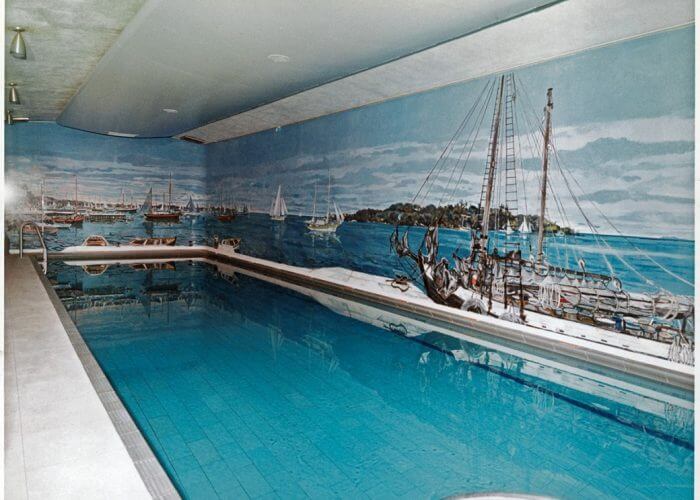
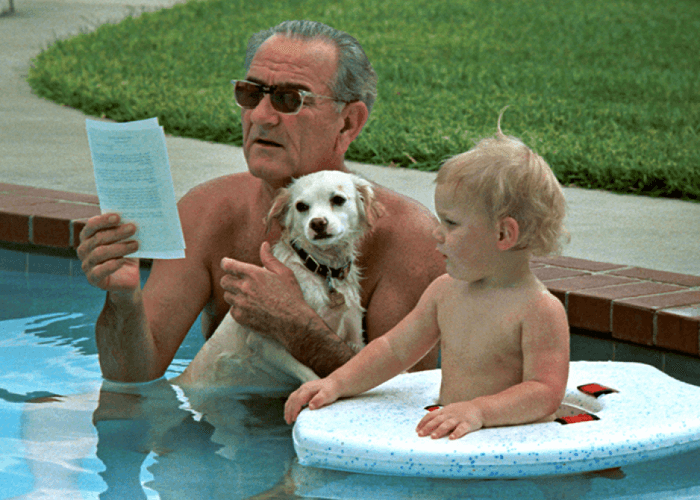
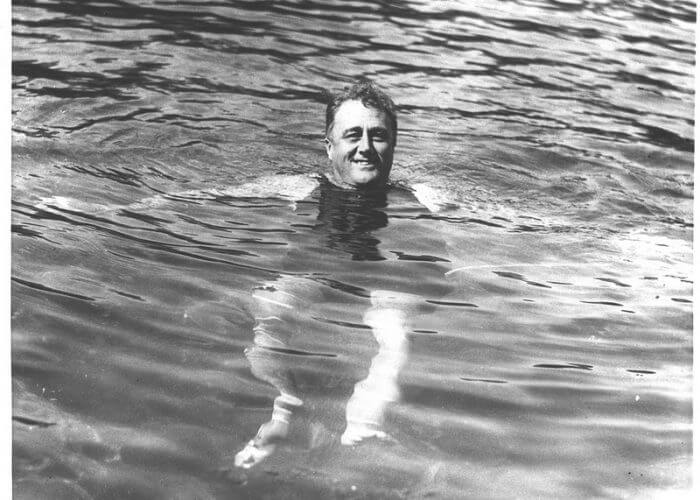
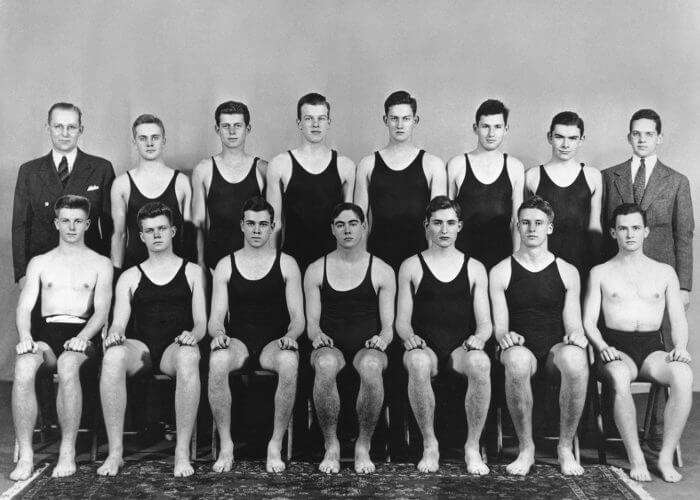
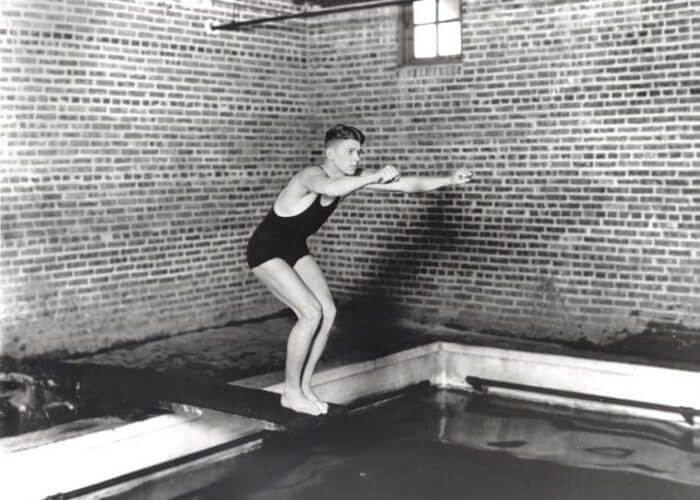
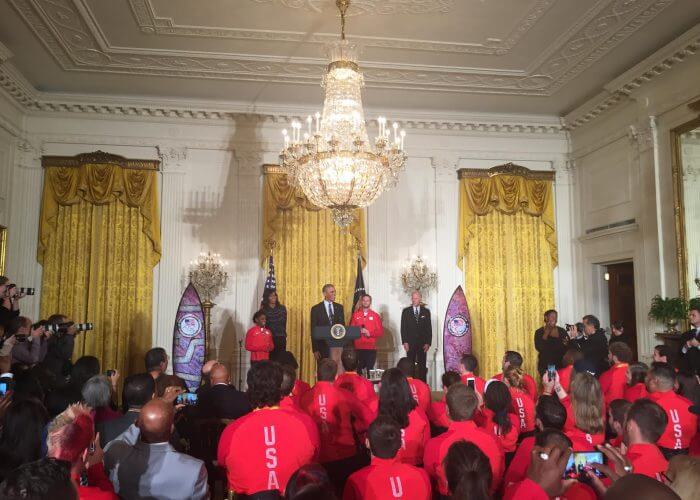
Interesting about Reagan and Kennedy swimming in college. Johnson and Billy Graham swimming without clothes how funny is that.
This is really interesting!
Franklin D. Roosevelt Jr. once said, “I think swimming is a wonderful thing.” Hey, me too!
And me too!
Last sentence resonates with irony if applied to to todays responsible swimming administrators as applied to the Lia Thomas situation. “Great understanding and respect for our sport.” I don’t think so!